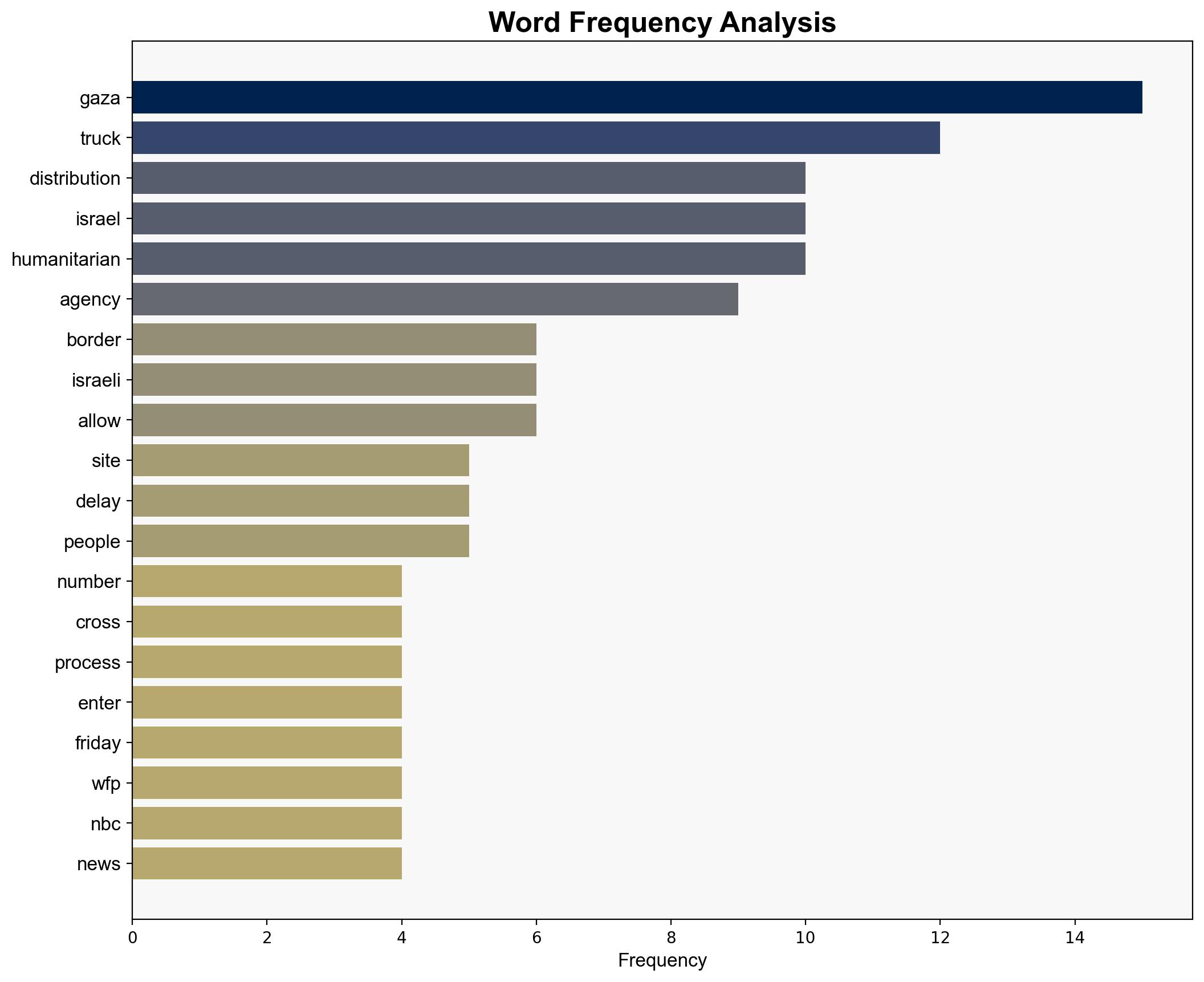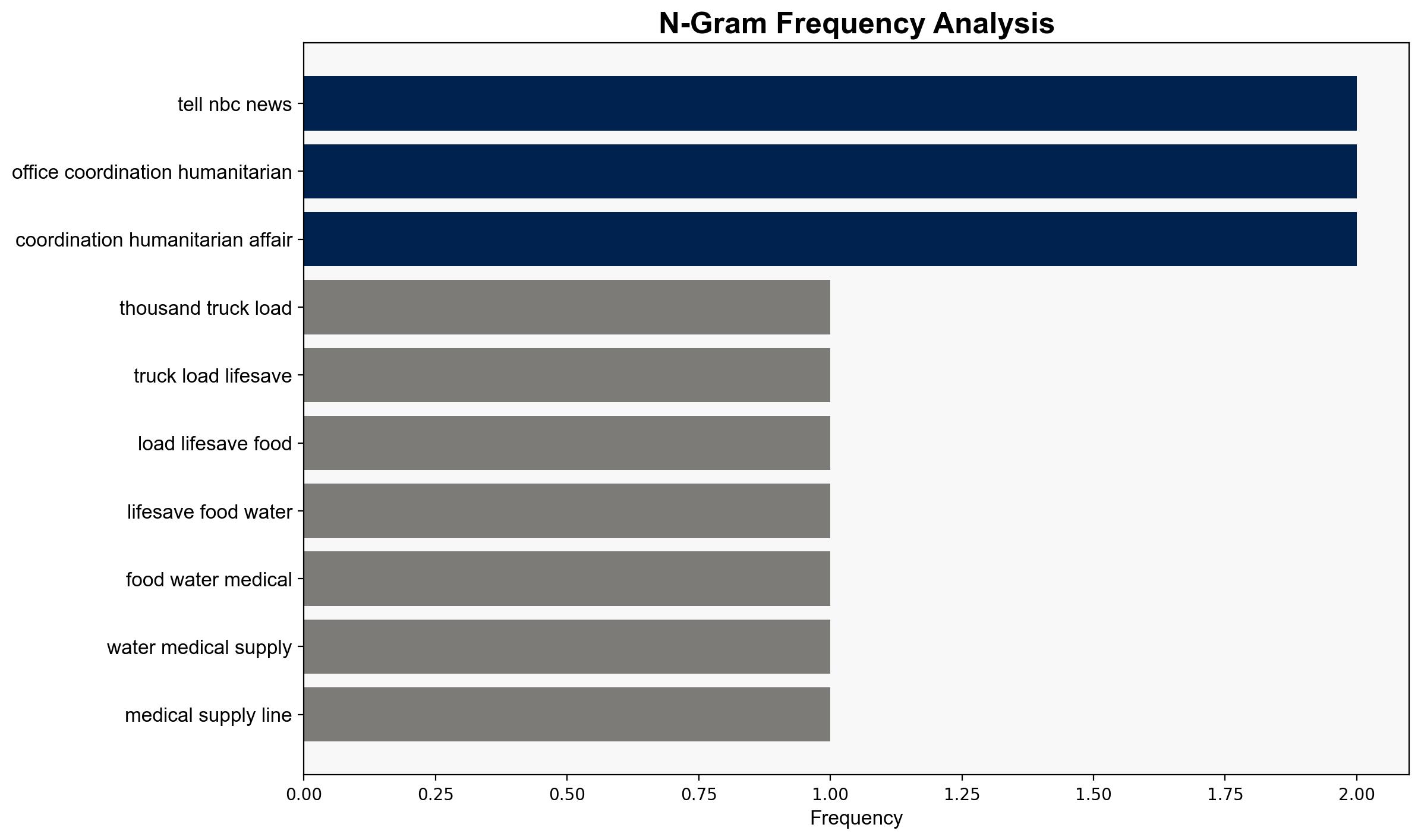The food is just outside the border But getting it to Gaza’s starving is a chaotic process – NBC News
Published on: 2025-07-26
Intelligence Report: The food is just outside the border But getting it to Gaza’s starving is a chaotic process – NBC News
1. BLUF (Bottom Line Up Front)
The most supported hypothesis is that bureaucratic inefficiencies and security concerns are the primary obstacles to effective humanitarian aid distribution to Gaza. This assessment is made with moderate confidence. To address these challenges, a coordinated international effort to streamline processes and ensure security could improve the situation.
2. Competing Hypotheses
1. **Hypothesis A**: Bureaucratic inefficiencies and security concerns are the primary obstacles to effective humanitarian aid distribution to Gaza.
– **Supporting Evidence**: Reports of complex bureaucracy, security impediments, and chaotic distribution processes. The UN and other agencies face delays and denials, indicating systemic issues.
2. **Hypothesis B**: Political motivations and deliberate obstruction by Israeli authorities are the main reasons for the limited aid distribution to Gaza.
– **Supporting Evidence**: Statements from Israeli officials suggesting a lack of willingness to facilitate aid, and calls for suspension of humanitarian distribution. The political debate within Israel about the aid process suggests possible intentional delays.
Using ACH 2.0, Hypothesis A is better supported due to the detailed descriptions of bureaucratic and logistical challenges, whereas Hypothesis B relies more on interpretative statements and political rhetoric.
3. Key Assumptions and Red Flags
– **Assumptions**:
– Hypothesis A assumes that inefficiencies are not deliberately exacerbated for political reasons.
– Hypothesis B assumes that Israeli authorities have significant control over the distribution process and are using it as a political tool.
– **Red Flags**:
– Lack of direct evidence linking Israeli actions to deliberate obstruction.
– Potential bias in reports from humanitarian agencies with vested interests.
– **Blind Spots**:
– Limited insight into the internal decision-making processes of Israeli authorities and Hamas.
– Insufficient data on the actual impact of aid once it enters Gaza.
4. Implications and Strategic Risks
– **Humanitarian Impact**: Continued delays could exacerbate the humanitarian crisis, increasing malnutrition and mortality rates.
– **Geopolitical Risks**: Prolonged obstruction could lead to international condemnation and increased tensions between Israel and humanitarian organizations.
– **Security Concerns**: The chaotic distribution process could be exploited by militant groups, leading to further instability in the region.
5. Recommendations and Outlook
- **Immediate Action**: Facilitate a neutral third-party mediation to streamline the aid distribution process and address security concerns.
- **Scenario-Based Projections**:
– **Best Case**: Streamlined processes and improved security lead to effective aid distribution, reducing humanitarian suffering.
– **Worst Case**: Continued obstruction results in a severe humanitarian crisis, escalating regional tensions.
– **Most Likely**: Incremental improvements in aid distribution with ongoing challenges due to bureaucratic and security issues.
6. Key Individuals and Entities
– Benjamin Netanyahu
– Itamar Ben Gvir
– Stéphane Dujarric
– Philippe Lazzarini
7. Thematic Tags
national security threats, humanitarian crisis, regional focus, geopolitical tensions





